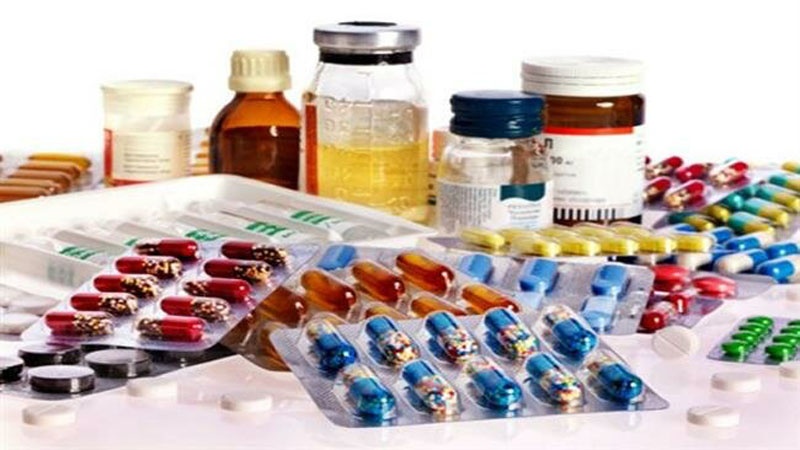Iranian Market (41)
Welcome to today’s episode of the Iranian Market. Iran’s pharmaceutical industry is one of the industries that has a high potential for presence in the global markets because of its domestic capabilities in producing various types of medicines.
The pharmaceutical industry is one of the key industries regarding its effects on human health. It is also very advantageous regarding the profits it produces. Fortune Magazine in an article published in 2010 announced the pharmaceutical industry as the third best industry in the world with respect to being appropriate for investment. Investment in this industry naturally leads to growth.
The growth of world population along with mankind’s vital need to health services are among the factors which help this industry grow faster. Among other influential factors on the growth of the pharmaceutical industry mention can be made of the aging of population, the existence of chronical diseases and some countries’ insurance coverage and economic welfare.
Also among the advantages of investment in this market is the balanced rate of growth in the global pharmaceutical industry. Actually, pharmaceutical industry is less affected by global economic fluctuations. This fact became more evident during the 2008 and 2009 economic crisis when the market continued its activity with a 70% plus growth. Today, the turnover of pharmaceutical industry in the world has surpassed one trillion dollars.
It should be noted that the expense of the pharmaceutical industry is high in comparison with other industries. One of the important expenses in this industry pertains to research and development (R& D). The expense of research and development in proportion to the sale is more than other advanced industries that enjoy state-of-the-art technologies.
The pharmaceutical industry is on the track of development, expansion and innovation because of its special status and direct relationship with the life and health of mankind.
The high income of big world pharmaceutical companies has paved the way to spend a remarkable part of their income on research and development.
The world pharmaceutical companies spend 40% of their income on research, development, marketing and sales.
Researches show that sometimes a 15-year period is needed for research on nearly 10,000 medicinal mixtures with a cost of one billion dollars.
The pharmaceutical industry is seriously monopolized. Most of these products are made in North America and Europe. Statistics show that North America had the highest share of the global market in 2013. This was while Africa and West Asia had just 4% of the share.
The pharmaceutical market is measured by the turnover of medicine industry.
This turnover includes the sale of basic materials, the sale of medicines to consumers, the import and export of medicines, the volume of investments, and the value of pharmaceutical companies.
As in the global pharmaceutical market, the so-called developed countries are pioneers in producing and consuming these medicines and possess about 79% of the whole market. In other words, the developing countries ( nearly 85% of the world population) only consume 21% of the produced medicines.
However, it seems that nowadays this trend is going to change due to different causes like economic decline of western countries as well as the emergence of new economies in the world. In other words, the pharmaceutical industry is shifting from the US and Europe toward emerging markets in Asia and Africa.
It is said that a remarkable volume of the growth in the global pharmaceutical market in the coming years will be affected by the growth in the emerging markets like Brazil, Russia, India, China, Ukraine, Poland, Argentina, Egypt, Indonesia, Algeria, South Africa, Romania and Vietnam.
The growth in the emerging markets is affected by the growth in the population, more access to medicines and new health services as well as the economic plans of governments.
According to the definitions of World Health Organization, the Islamic Republic of Iran with an 80-year experience in the pharmaceutical industry is considered as a producer. This was while before the victory of Islamic Revolution, Iran supplied its needs of medicines by multinational companies directly or indirectly. However, after the victory of Islamic Revolution and industrialization of the major part of the pharmaceutical industry, Iran expanded its activities in the field of producing medicines. Within less than four decades it has succeeded to provide more than 95% of its domestic needs.
The Islamic Republic along with launching tens of small and big pharmaceutical companies, has accelerated activities like attracting more students in the field of pharmacology and expanding science-based pharmaceutical companies in order to make pharmaceutical products with advanced technology.
Official figures show that Iran’s achievements in the field of pharmaceutical industry in the years 1979 - 2015 has increased from 30 to 96%.
Iranian experts have been successful in controlling many diseases especially cardiovascular diseases and hypertension by producing domestic medicines.
The consumption of domestic medicines and their effect on the health of patients are among the causes of increasing life expectancy in Iran.
The Islamic Republic of Iran exports its pharmaceutical products as well as basic materials of making medicines to many countries in the West and Central Asia like Iraq, and Afghanistan.
Iran is recognized as one of the ten top countries in the field of pharmaceutical industry.
AE/RM/SS



